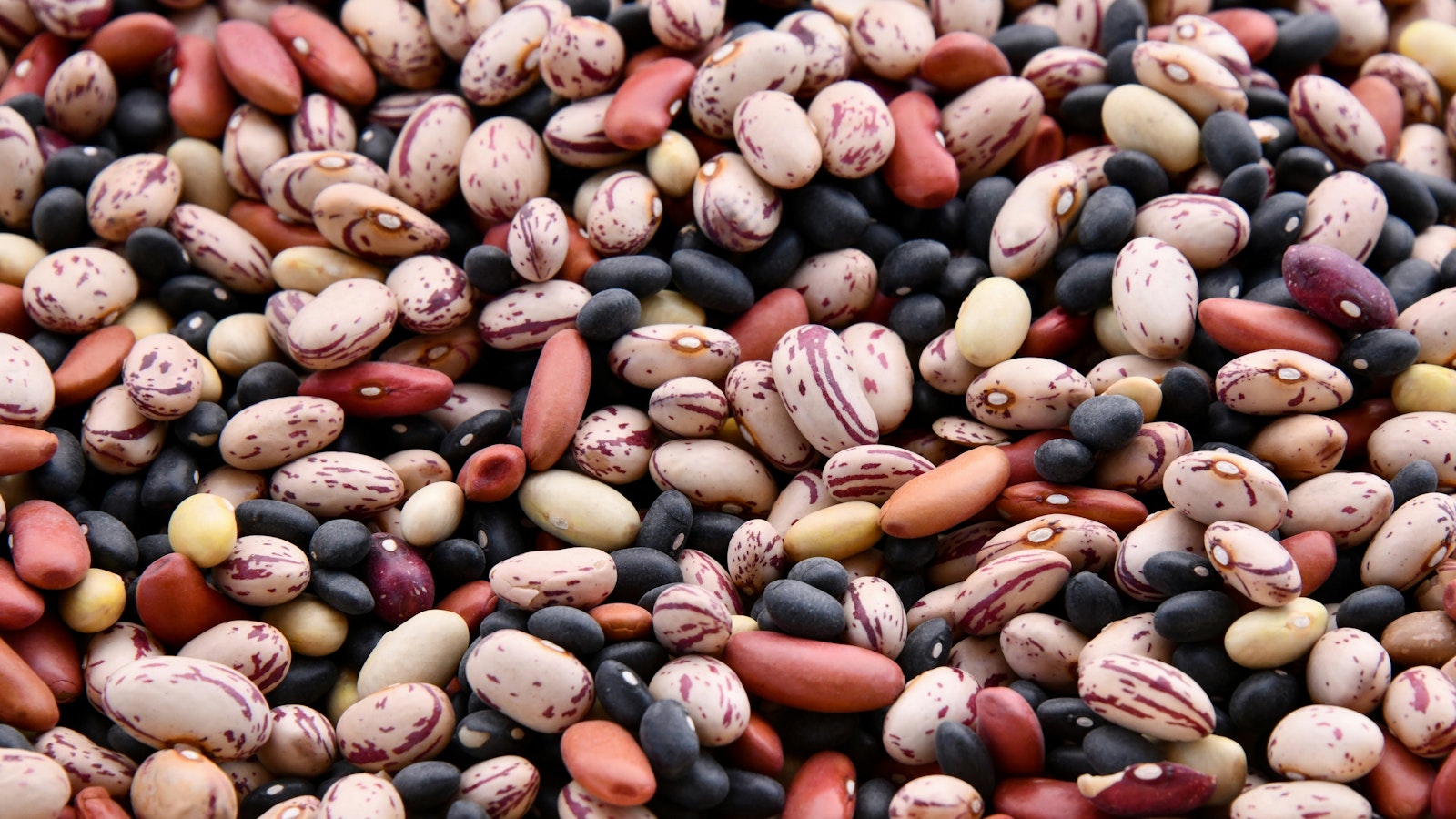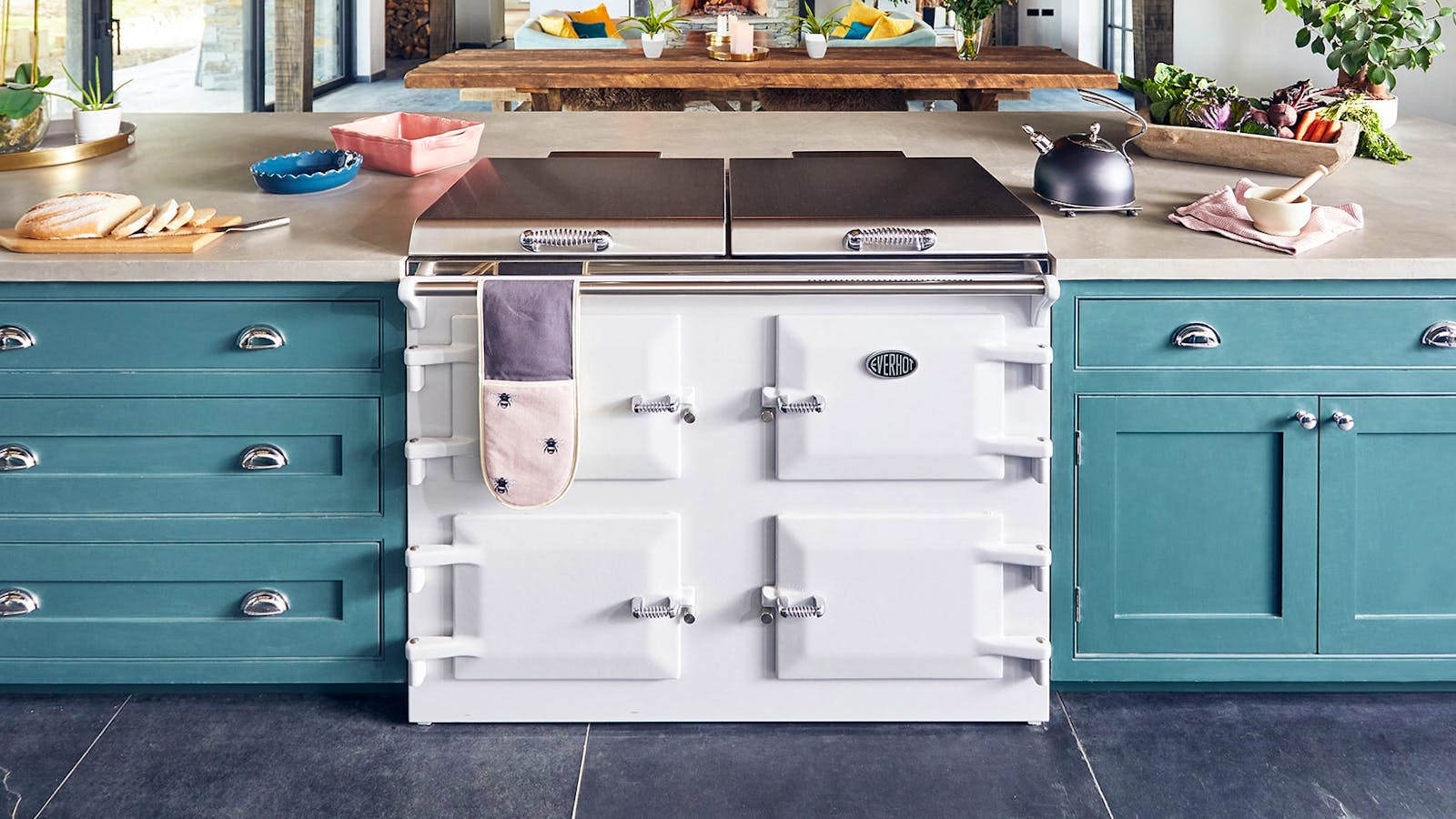Bread, one of the most consumed foods on the planet, is chief amongst these. Many brands are loaded with emulsifiers, additives and preservatives, as well as higher sugar and salt content. It is true that artisan bread outlets have risen hugely in popularity, but they can be (understandably) expensive to buy.
Baking your own may not be possible daily, but when you do have the time, it is rewarding, fills your house with the delicious scent of a baking loaf and leaves you confident that all your bread contains is recognisable whole ingredients. Here are our top seven recipes for sensation daily bread.
Basic White Bread

Sometimes you just want the fluffy goodness of a loaf of good, classic white bread, whether made into sandwiches and transported on picnics or devoured straight from the oven. Here’s how to perfect the art.
Ingredients
500g strong white bread flour
1 sachet (7g) fast-action dried yeast
300ml warm water (about 110°F or 45°C)
1 tablespoon granulated sugar
1 teaspoon salt
2 tablespoons vegetable oil or melted butter
Instructions
Activate the Yeast
In a small bowl, combine the warm water and sugar. Stir until the sugar is dissolved.
Sprinkle the yeast over the water and let it sit for about 5-10 minutes until it becomes frothy. This indicates that the yeast is activated.
Mix the Dough
In a large mixing bowl, combine the flour and salt.
Make a well in the centre of the flour mixture and pour in the activated yeast mixture and vegetable oil or melted butter.
Knead the Dough
Using a wooden spoon or your hands, mix the ingredients until a shaggy dough forms.
Transfer the dough to a lightly floured surface and knead it for about 5-7 minutes until it becomes smooth and elastic. Add more flour if the dough is too sticky, but try to keep it slightly tacky.
First Rise
Lightly grease a large bowl with oil or cooking spray. Place the dough in the bowl and turn it to coat it with oil.
Cover the bowl with a clean kitchen towel or plastic wrap and let the dough rise in a warm, draft-free place for about 1 hour or until it doubles in size.
Shape the Loaf:
After the dough has doubled in size, punch it down to release the air.
Transfer the dough to a lightly floured surface and shape it into a loaf. You can roll it into a rectangle and then roll it up tightly, pinching the seams together at the bottom.
Second Rise
Place the shaped dough into a greased loaf pan.
Cover the pan with a clean kitchen towel or plastic wrap and let the dough rise again for about 30-45 minutes until it puffs up and fills the pan.
Bake the Bread
Preheat your oven to 375°F (190°C) while the dough is rising.
Once the dough has risen, place the loaf pan in the preheated oven and bake for 25-30 minutes, or until the bread is golden brown on top and sounds hollow when tapped on the bottom.
Remove the bread from the oven and let it cool in the pan for a few minutes before transferring it to a wire rack to cool completely.
Whole Wheat Bread

One to enjoy everyday, whether fresh from the oven, made into sandwiches or for your morning toast.
Ingredients
300g wholemeal flour
150g strong white bread flour
1 sachet (7g) fast-action dried yeast
250ml warm water (about 110°F or 45°C)
2 tablespoons honey or molasses
2 tablespoons vegetable oil or melted butter
1 teaspoon salt
Method
Follow the same steps as above with the white loaf, bake, butter liberally (ideally when still warm) and enjoy.
French Baguette

A French baguette is redolent of holidays – and it’s easy to make too. Knock one up, load it into the basket on your bike and head off for springtime adventures and simple picnics in flower-strewn meadows.
Ingredients
500g strong white bread flour
10g salt
7g fast-action dried yeast
350ml lukewarm water
Method
Activate the Yeast
In a small bowl, combine the lukewarm water and yeast. Stir and let it sit for about 5-10 minutes until it becomes frothy.
Mix the Dough
In a large mixing bowl, combine the flour and salt.
Make a well in the centre of the flour mixture and pour in the activated yeast mixture.
Knead the Dough
Using your hands or a stand mixer with a dough hook attachment, mix the ingredients until a rough dough forms. Knead the dough for about 10 minutes until it becomes smooth and elastic. You can add a little extra flour if the dough is too sticky.
First Rise
Lightly grease a large bowl with oil or cooking spray. Place the dough in the bowl, cover it with a clean kitchen towel or plastic wrap, and let it rise in a warm, draft-free place for about 1 hour or until it doubles in size.
Shape the Baguettes
Once the dough has risen, gently punch it down to release the air.
Divide the dough into three equal portions.
On a lightly floured surface, shape each portion into a baguette by rolling it out into a long rectangle and then rolling it up tightly, pinching the seams together at the bottom.
Second Rise
Place the shaped baguettes onto a baking tray lined with parchment paper.
Cover them with a clean kitchen towel or plastic wrap and let them rise again for about 30-45 minutes until they puff up and increase in size.
Score the Baguettes
Preheat your oven to 220°C (425°F) while the baguettes are rising.
Using a sharp knife or a razor blade, make diagonal slashes along the tops of the baguettes.
Bake the Baguettes
Once the baguettes have risen, place them in the preheated oven and bake for 20-25 minutes, or until they are golden brown and sound hollow when tapped on the bottom.
Remove the baguettes from the oven and let them cool on a wire rack before slicing and serving.
Sourdough Bread

This ancient method of baking bread is good for the gut and, we’d argue, the soul. It’s tasty, nourishing and extremely satisfying to make once you master the art of keeping the starter going.
Ingredients
300g strong white bread flour
100g wholemeal flour
200g active sourdough starter (100% hydration)
200ml lukewarm water
7g salt
Method
Mixing
In a large mixing bowl, combine the strong white bread flour, wholemeal flour, and salt.
Add the active sourdough starter and lukewarm water to the dry ingredients.
Mix everything together until a shaggy dough forms. You may need to use your hands to fully incorporate the ingredients.
Kneading
Transfer the dough to a lightly floured surface and knead it for about 10-15 minutes until it becomes smooth and elastic. Alternatively, you can use a stand mixer with a dough hook attachment.
Shape the dough into a ball.
First Rise (Bulk Fermentation)
Place the dough in a clean, lightly oiled bowl. Cover the bowl with a clean kitchen towel or plastic wrap.
Let the dough ferment at room temperature for about 4-6 hours, or until it has doubled in size. The exact time will depend on the temperature of your kitchen and the activity of your sourdough starter.
Shaping
Once the dough has doubled in size, gently deflate it by pressing down on it with your fingertips.
Shape the dough into a round or oval loaf by folding the edges towards the center and then flipping it over and tightening the surface.
Place the shaped loaf onto a piece of parchment paper.
Second Rise (Proofing)
Cover the shaped loaf with a clean kitchen towel or place it in a proofing basket (banneton).
Let the dough proof at room temperature for another 2-4 hours, or until it has increased in size and feels airy to the touch. You can also perform the "poke test" – if the dough springs back slowly when poked, it's ready.
Preheat the Oven
About 30 minutes before baking, preheat your oven to 230°C (450°F). Place a Dutch oven or baking stone in the oven to preheat as well.
Baking
Once the oven is preheated and the dough has finished proofing, carefully transfer the dough (along with the parchment paper) into the preheated Dutch oven or onto the preheated baking stone.
Score the top of the loaf with a sharp knife or razor blade to allow for expansion during baking.
Cover the Dutch oven with its lid or create steam in the oven by placing a pan of hot water on the bottom rack.
Bake the bread covered for 20-25 minutes, then uncover and bake for an additional 20-25 minutes or until the crust is deep golden brown and the loaf sounds hollow when tapped on the bottom.
Remove the bread from the oven and let it cool completely on a wire rack before slicing.
Rye Bread

Dense, dark and nutty, rye bread is intensely good for you – plus it makes the perfect quick weekday lunch topped with avocado, feta and chilli.
Ingredients
250g rye flour
250g strong white bread flour
7g fast-action dried yeast
300ml lukewarm water
1 tablespoon honey or molasses
1 teaspoon salt
Method
Activate the Yeast:
In a small bowl, combine the lukewarm water and honey or molasses. Stir until the honey or molasses is dissolved.
Sprinkle the yeast over the water mixture and let it sit for about 5-10 minutes until it becomes frothy. This indicates that the yeast is activated.
Mix the Dough
In a large mixing bowl, combine the rye flour, strong white bread flour, and salt.
Make a well in the center of the flour mixture and pour in the activated yeast mixture.
Knead the Dough
Using your hands or a stand mixer with a dough hook attachment, mix the ingredients until a rough dough forms.
Knead the dough for about 10-12 minutes until it becomes smooth and elastic. You can add a little extra flour if the dough is too sticky, but rye dough tends to be stickier than wheat dough.
First Rise
Lightly grease a large bowl with oil or cooking spray. Place the dough in the bowl, cover it with a clean kitchen towel or plastic wrap, and let it rise in a warm, draft-free place for about 1 hour or until it doubles in size.
Shape the Loaf
After the dough has doubled in size, gently punch it down to release the air.
Transfer the dough to a lightly floured surface and shape it into a loaf. You can shape it into a round or oval loaf, depending on your preference.
Second Rise
Place the shaped dough onto a baking tray lined with parchment paper.
Cover it with a clean kitchen towel or plastic wrap and let it rise again for about 30-45 minutes until it puffs up and increases in size.
Preheat the Oven
About 30 minutes before baking, preheat your oven to 200°C (390°F).
Bake the Bread
Once the dough has finished rising, slash the top of the loaf with a sharp knife or razor blade.
Place the loaf in the preheated oven and bake for 35-40 minutes, or until the bread is golden brown on top and sounds hollow when tapped on the bottom.
Remove the bread from the oven and let it cool on a wire rack before slicing.
Pitta Bread

Perfect as an after-school pick-me-up or to offer to guests when they arrive alongside dips, these moreish pockets are good when shop bought, but even better made at home.
Ingredients
2 1/2 cups (300g) all-purpose flour
1 teaspoon (5g) salt
1 teaspoon (5g) sugar
1 tablespoon (15ml) olive oil
1 cup (240ml) lukewarm water
1 packet (2 1/4 teaspoons or 7g) active dry yeast
Method
Activate the Yeast
In a small bowl, combine the lukewarm water and sugar. Stir until the sugar is dissolved.
Sprinkle the yeast over the water mixture and let it sit for about 5-10 minutes until it becomes frothy. This indicates that the yeast is activated.
Mix the Dough
In a large mixing bowl, combine the all-purpose flour and salt.
Make a well in the centre of the flour mixture and pour in the activated yeast mixture and olive oil.
Stir the ingredients together until a rough dough forms.
Knead the Dough
Transfer the dough to a lightly floured surface and knead it for about 5-7 minutes until it becomes smooth and elastic. Add more flour if the dough is too sticky, but try to keep it slightly tacky.
First Rise
Lightly grease a large bowl with oil or cooking spray. Place the dough in the bowl and turn it to coat it with oil.
Cover the bowl with a clean kitchen towel or plastic wrap and let the dough rise in a warm, draft-free place for about 1 hour or until it doubles in size.
Shape the Dough
After the dough has doubled in size, punch it down to release the air.
Divide the dough into 8 equal portions. Shape each portion into a ball.
Second Rise
On a lightly floured surface, flatten each dough ball into a disk about 1/4 inch (6mm) thick. Cover the disks with a clean kitchen towel and let them rise for another 15-20 minutes.
Bake the Pita Bread
Preheat your oven to 475°F (245°C) while the dough is rising.
Place a baking sheet or baking stone in the oven to preheat.
Once the dough has finished rising, carefully transfer the disks onto the preheated baking sheet or stone.
Bake for 5-7 minutes, or until the pita breads puff up and turn golden brown.
Remove the pita breads from the oven and let them cool on a wire rack before serving.
Focaccia

Moist, oil-drenched and utterly irresistible, focaccia is perfect for mopping up the remnants of a meal; for serving as a sandwich with a sliver of mozzarella and tomato in its middle; or simply to stud with extras such as cherry tomatoes or olives and eat all on its own.
Ingredients
4 cups (500g) bread flour
2 teaspoons (7g) active dry yeast
1 1/2 cups (360ml) lukewarm water
2 teaspoons (10g) salt
1/4 cup (60ml) extra virgin olive oil, plus more for drizzling
1 tablespoon (15g) granulated sugar
Optional toppings: fresh rosemary, cherry tomatoes, olives, sea salt, etc.
Instructions
Activate the Yeast
In a small bowl, combine the lukewarm water and sugar. Stir until the sugar is dissolved.
Sprinkle the yeast over the water mixture and let it sit for about 5-10 minutes until it becomes frothy. This indicates that the yeast is activated.
Mix the Dough
In a large mixing bowl, combine the bread flour and salt.
Make a well in the centre of the flour mixture and pour in the activated yeast mixture and olive oil.
Stir the ingredients together until a shaggy dough forms.
Knead the Dough
Transfer the dough to a lightly floured surface and knead it for about 5-7 minutes until it becomes smooth and elastic. Add more flour if the dough is too sticky, but try to keep it slightly tacky.
First Rise
Lightly grease a large bowl with oil or cooking spray. Place the dough in the bowl and turn it to coat it with oil.
Cover the bowl with a clean kitchen towel or plastic wrap and let the dough rise in a warm, draft-free place for about 1 hour or until it doubles in size.
Shape the Dough
After the dough has doubled in size, punch it down to release the air.
Transfer the dough to a lightly oiled baking sheet (about 9x13 inches) and gently stretch it to fit the pan.
Cover the dough with a clean kitchen towel or plastic wrap and let it rise for another 30-45 minutes.
Preheat the Oven
About 30 minutes before baking, preheat your oven to 425°F (220°C).
Add Toppings and Bake
Once the dough has finished rising, use your fingertips to make dimples all over the surface of the dough.
Drizzle the top of the dough with olive oil and sprinkle with any desired toppings, such as fresh rosemary, cherry tomatoes, olives, or sea salt.
Bake the focaccia in the preheated oven for 20-25 minutes, or until it is golden brown on top and sounds hollow when tapped on the bottom.
Remove the focaccia from the oven and let it cool slightly before slicing and serving.





